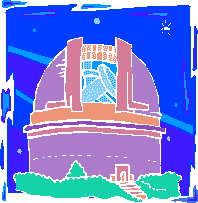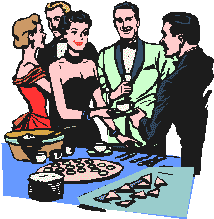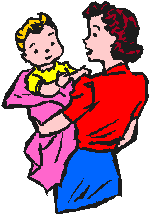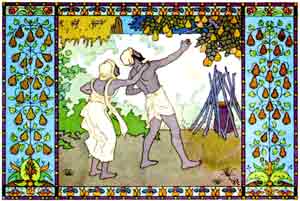|
|
 |
| Welcome | Contact | Getting Started | Site Map | Resources | 1 | 2 | 3 | 4 | 5 | 6 | 7 | 8 | 9 | 10 |
Unit 6 - Social Institutions
Lecture |
 In the second lecture, where I began a definition of science, I mentioned that science is a social institution and that I would come
back to the idea of social institution later. This is, obviously, the
place. In this
lecture
I’d like to describe how sociologists use the concept “institution” and
how it is useful for placing the scientific process in a social context.
In the second lecture, where I began a definition of science, I mentioned that science is a social institution and that I would come
back to the idea of social institution later. This is, obviously, the
place. In this
lecture
I’d like to describe how sociologists use the concept “institution” and
how it is useful for placing the scientific process in a social context.
Human beings are social animals. Among other things, this means that
we need other people to survive.  Like other social animals, human infants
don’t thrive without careful nurturing by other humans.
As we grow, we need other humans to teach us how to survive on our own.
Depending
on our culture, that may mean teaching us how to grow our own food
or it may mean teaching us how to look for bargains at the grocery store.
We need to learn a language, the rules for behavior in our particular
society, and how to satisfy our needs and desires in a socially acceptable
manner.
Like other social animals, human infants
don’t thrive without careful nurturing by other humans.
As we grow, we need other humans to teach us how to survive on our own.
Depending
on our culture, that may mean teaching us how to grow our own food
or it may mean teaching us how to look for bargains at the grocery store.
We need to learn a language, the rules for behavior in our particular
society, and how to satisfy our needs and desires in a socially acceptable
manner.
It is clear that we need society. But it is also the case that society needs us. “Society” is another one of those concepts we’ve been discussing. It doesn’t exist as a “thing” although we often refer to it as if it does. We say things like “Society thinks that……..” or “Society wants us to………” But what “society” really consists of is our interactions with each other. Society is a process, not a thing. It is built up minute by minute and day by day through our interactions with each other. Those interactions make up what we call society - especially if they are patterned interactions that occur over time. We can see the creation of society, although not society itself, when we watch the U.S. Congress at work or a 5th grade classroom or people politely moving their carts aside in the grocery store. Society is created as we interact on the internet, the interstate highways, and in office buildings. Personal relationships help to create society. Marriages, sibling rivalry, and getting a job through a friend all build the patterns we call society.
Sociologists call these long-term, well-established patterns of interaction “institutions.” “Institution” is a hard concept to understand for several reasons. One is that the word “institution” is used by non-sociologists in a very different way than sociologists use it. Non-sociologists refer to OSU as an institution of higher learning. They say we lock people up in penal or mental institutions. That isn’t what a sociologist means when he or she talks about an institution. In a sociological sense, the concept of institution refers to patterned interactions that occur over a long period of time and meet a societal, rather than an individual, need. The concept of institution is also hard to understand because it refers, in the sociological perspective, to something very abstract. Institutions consist of patterned behaviors and interactions shaped by norms, values and beliefs about what is right and wrong and about the way things “should be done.” We can’t see these patterns but we can see the results as they unfold around us every day.
You probably never thought about society having needs, did you? Note
that I am falling
 into the trap of treating “society” as
if it were a thing. Remember that I’m referring to the sum total
of our relationships and interactions with each other when I write “society.” We
have to interact for society to exist even as a mental image. If we
don’t interact, society goes away. And, if the interactions that
make up society are to continue over a long period of time, certain
conditions must be met. Societies need to have new members to replace
those who leave or die. There needs to be a way to integrate those
new members into the society - a way to teach them how to behave in
this society that may be different than how people behave in other
societies. Humans have developed a pattern of interactions that meet
this societal need. It is called the family. Families create new members
and begin the process of making them acceptable members of the society.
In each society, there is a pattern for families. It is this pattern
that sociologists call an institution.
into the trap of treating “society” as
if it were a thing. Remember that I’m referring to the sum total
of our relationships and interactions with each other when I write “society.” We
have to interact for society to exist even as a mental image. If we
don’t interact, society goes away. And, if the interactions that
make up society are to continue over a long period of time, certain
conditions must be met. Societies need to have new members to replace
those who leave or die. There needs to be a way to integrate those
new members into the society - a way to teach them how to behave in
this society that may be different than how people behave in other
societies. Humans have developed a pattern of interactions that meet
this societal need. It is called the family. Families create new members
and begin the process of making them acceptable members of the society.
In each society, there is a pattern for families. It is this pattern
that sociologists call an institution.
In the same way, we have an economic institution that fills the need of creating and distributing goods and services. Our industrial/capitalist pattern is very different than the one described by Volti on pages 131-132. The !Kung have different values, norms, and beliefs so their economic institution looks very different from ours. But it still fills the need of creating and distributing goods and services. We have a political institution that fills the need of organizing and regulating social activity. Our religious institution provides values and beliefs that help hold society together; that make people want to participate, and our military institution protects us from threats from within and outside our society. The educational institution passes on knowledge and continues the work started in the family of integrating people into society. Each of these institutions benefits individuals but the primary purpose of the patterns, from a sociological perspective, is the creation and maintenance of the social process or what we call “society.”
For this reason, and several others, it is very hard to change institutional patterns. To do so threatens the existence of the society. Sometimes change is needed but it most often occurs as a result of other change in other social forces rather than through purposive change by individuals or groups. People can change organizations, laws, and customs, but it is very hard for people to change a social institution. It takes a very long time to change patterns of behavior among all the people that make up a society. On the other hand, technological developments can change a society quite quickly. Just think about how computerized technologies have changed the world of work and leisure over the past ten years. Volti’s discussion about the measurement of time (page 139+) provides an excellent example of how technologies change social institutions.
Another reason why it is hard for individuals or groups to change institutions is because all of the institutions in a society work together. They must “mesh” or the society doesn’t work very well. You rarely see a change in one set of patterns that isn’t reflected in all parts of society. Changes in the economic institution over the past fifty-odd years are reflected in family life, for example. As more women move into the workforce, families spend less time together. Eating dinner together every night is no longer a common cultural pattern. Many people would like a return to a time when families seemed closer and work played a smaller role in most people’s lives, but because the family is connected to the economic institution, that change would be very difficult to make.
Science is one of the most important institutions in our society today.
Some of us describe the period of history we live in as the Age of
Information and science is the part of our society responsible for
providing us with reliable and useful information. Science
meets the societal need of providing us with a way to understand the
world. Remember
that science, as a methodology, is a fairly recent invention. We have
only had a scientific institution for the last few hundred years. In
the past the way people learned about the world was through tradition,
personal experience, faith or listening to authority figures. On page
133 of the text, Volti describes how early agriculturalists learned
about the world through their own experience as they began to grow
crops.  The institutions, or patterns of interaction, that grew around
these forms of knowledge were quite different than the one we call
science. Our scientific way of knowing has norms, such as the use of
the scientific method, reliance on probability and statistics, and
precision in the wording of research questions and hypotheses. It rests
on values like empiricism (believing only in what you can observe through
your five senses), determinism (things have causes), skepticism (a “show
me” attitude), and the value of knowledge over ignorance. It
also has beliefs attached to it. There is, for example, the belief
that science can solve many human problems. These elements work very
well in a modern, post-industrial, capitalist economy but not in a
pre-industrial, horticultural society where religion is the most important
institution.
The institutions, or patterns of interaction, that grew around
these forms of knowledge were quite different than the one we call
science. Our scientific way of knowing has norms, such as the use of
the scientific method, reliance on probability and statistics, and
precision in the wording of research questions and hypotheses. It rests
on values like empiricism (believing only in what you can observe through
your five senses), determinism (things have causes), skepticism (a “show
me” attitude), and the value of knowledge over ignorance. It
also has beliefs attached to it. There is, for example, the belief
that science can solve many human problems. These elements work very
well in a modern, post-industrial, capitalist economy but not in a
pre-industrial, horticultural society where religion is the most important
institution.
Seeing science as a social institution, in the sociological sense, allows us to put it in a social context, to see it as human activity, and analyze it as a set of social patterns connected to the rest of society. It helps us to understand why it is so important to our society and so hard to challenge as the only way of knowing about the world.
| |
| Welcome | Contact | Technical | Site Map | Resources | 1 | 2 | 3 | 4 | 5 | 6 | 7 | 8 | 9 | 10 |